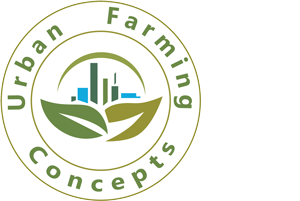Microgreens are becoming more popular these days because of many reasons. They are tiny plants packed with flavor and have concentrated nutrient contents. They provide more health benefits than mature plants and can be grown indoors and outdoors. Microgreens like cilantro, red cabbage, and radish carry up to 40 times higher levels of vital nutrients than their mature coequals. As they have plenty of varieties and amazing health advantages, we want to get the most out of their plants.
Do microgreens regrow?
Microgreens are normally harvested when there are four or more leaves. Harvesting them plainly means cutting them above ground level with scissors. The seeds are not harvested in microgreens. So, ever wondered if they can regrow after cutting? Well, not all types regrow after harvesting, many do and they can be regrown. It depends on the first cutting.
If there is at least one healthy leaf left, chances are that it can survive and regrow. This is because seedlings will continue doing photosynthesis with light. However, the growth rate would be much slower. Also, the second harvest of microgreens will have a slightly different taste, which is why commercial growers do not go for regrowing.
Which microgreens regrow?
As the name says, microgreens are micro-sized greens and much regrowth does not happen after cutting as they are stunted. Hence the probability of regrowing is low. However, microgreens of pea species such as green peas, field peas, snap peas, speckled peas, fava beans, and snow peas have better chances of regrowth. Some microgreens used in salads can also be regrown. Use large pots when experimenting on regrowing as they provide better root structure which in turn improves the chances of regrowth.
Factors affecting microgreens regrowth
Let’s see what promotes regrowth and what inhibits the regrowth of microgreens.
Photosynthesis and Cell Regeneration
It is recommended to leave an inch of the stem along with the lowest leaves. This can facilitate photosynthesis, which in turn will help in regrowth. Lower leaves come in the cell regeneration section and so they are necessary for growth.
Cut Healing and Defense
Cell regeneration plays a very important role in the healing of microgreens. Plants can heal themselves after being cut. They generate scarring tissue that avoids infection when they are injured. When the plant is young, it is open to all kinds of infections. The open tissue after being cut increases the chance of fungus and other diseases reaching them. Be careful to not overwater them as fungi develop faster in moist weather.
Suggestions to harvest microgreens for regrowth
The way in which you cut your first grown microgreens depends on the regrowth. The following tips can help you in your first harvesting
- Using larger pots with deeper soil levels may have a better chance of regrowing.
- Make use of sharp scissors to give them a clean cut. The harvesting tool should be clean to reduce bacterial infections.
- Leave some length above the ground level i.e., cut above the lowest set of leaves on the plant. This will help plants continue with photosynthesis.
- Ensure to regularly water and keep an eye on for the signs of mold or other diseases. Do not overwater.
- When trying for a second harvest, the way of watering becomes very important. Top watering these delicate baby plants increases the risk of damaging them. Not only that, it may lead to overwatering and thereby mold growth issues.
Advantages and Disadvantages of the second harvest
The benefits of regrowing are comparatively less here. Let’s look into the pros and cons in detail.
Advantages
Even though the main intention of regrowing would be to save money, the profit would be minor.
Disadvantages
Below listed are some disadvantages of regrowing
- Resource wastage: Growing the second batch of microgreens leads to wastage of soil nutrients and also microgreen seeds.
- Prone to diseases: Microgreens are grown in short duration and harvested when they are just a couple of inches tall. The longer the growth duration, the more risk of getting diseases.
- Most of the second harvested microgreens are less tasty and nutritious. They will have an altered texture and be less flavorful.
- Growing the second batch of microgreens takes much more time than starting afresh.
Before losing all hopes, know that some types of microgreens regrow like varieties of peas, kale, and spinach. Coriander, oregano, sage, basil, and fenugreek may also regrow. If you are growing for saving money and time, it’s not worth it. Anyhow if you want to try simply for fun, you should try and experiment!


